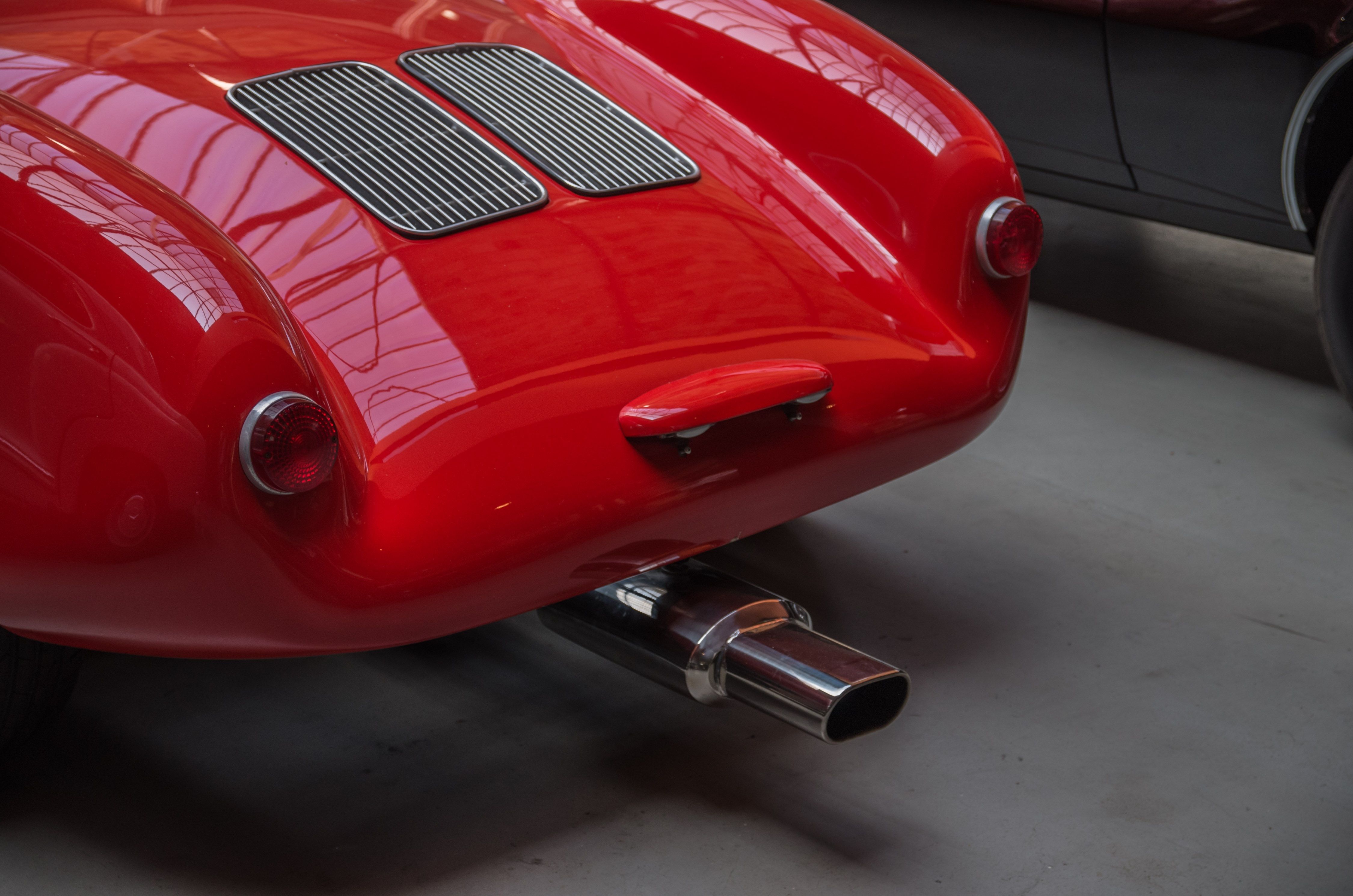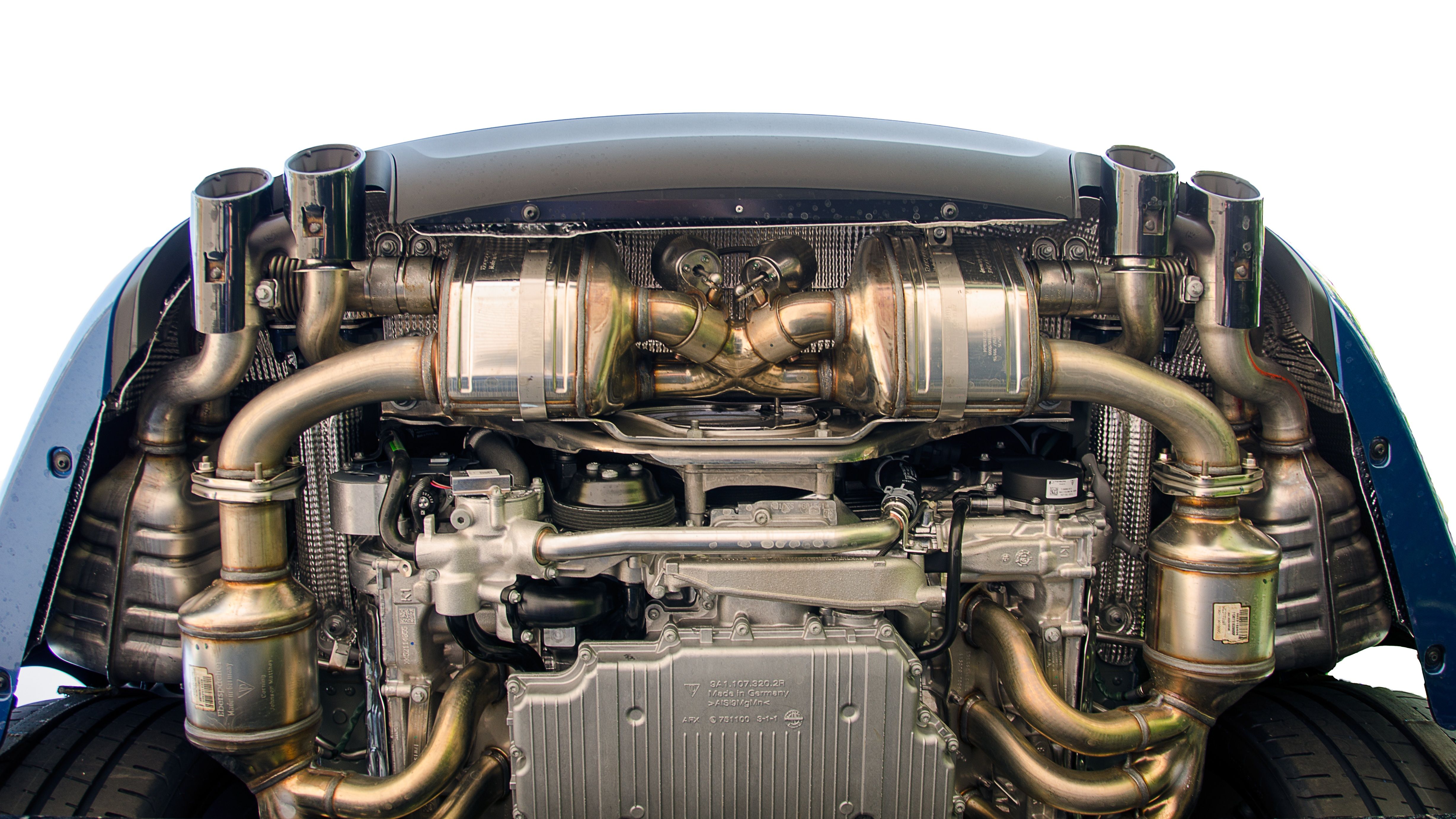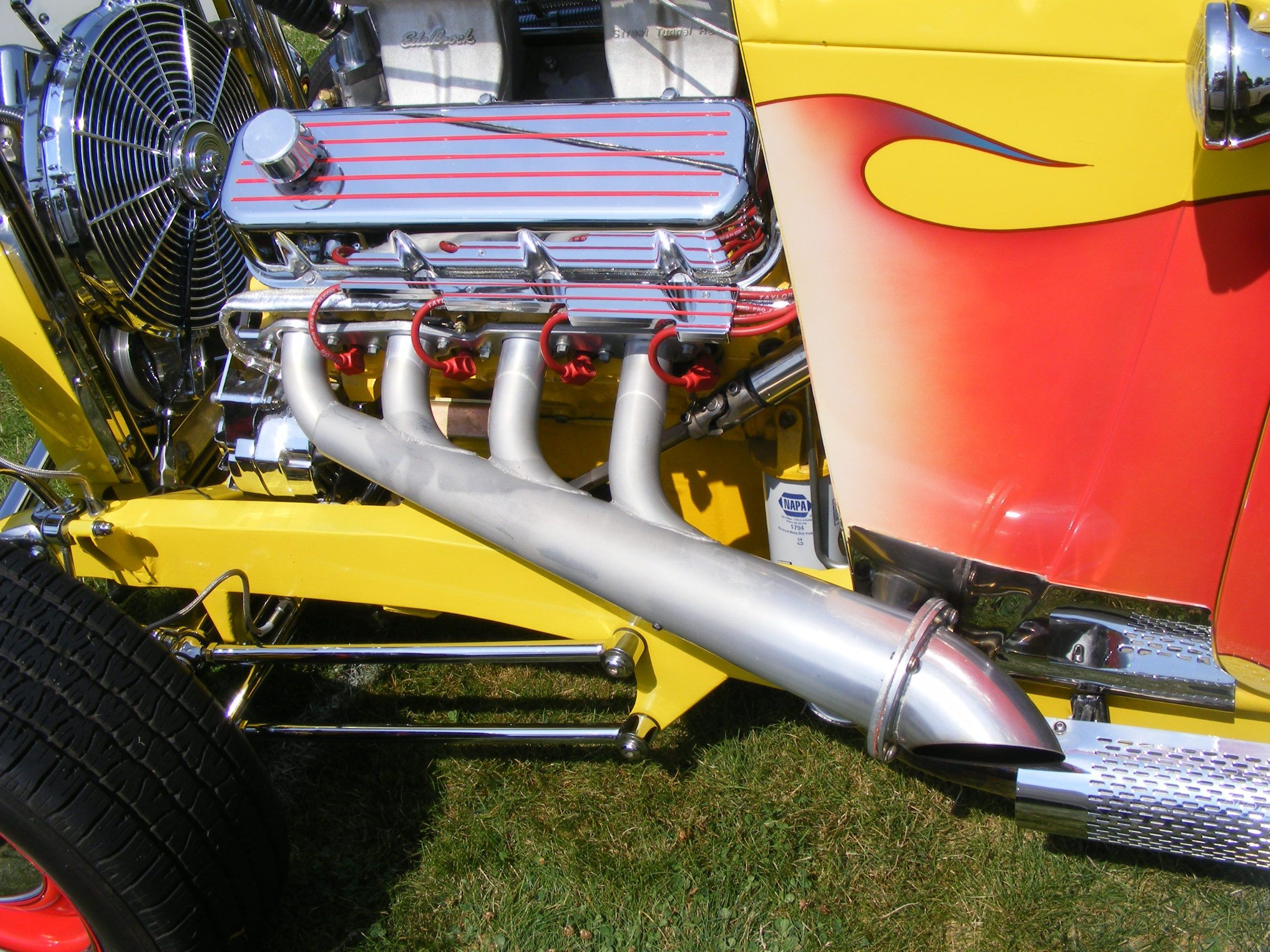If you’re anything like me, you probably enjoy powerful and sporty cars (especially of the big engine displacement or forced induction type), and you might even be thinking about upping the soundtrack of your drive with an upgraded exhaust.
We’ve all heard cars buzz by us with all sorts of exhaust systems (or lack thereof), and sometimes it’s just nothing but unenjoyable noise, like two beehives having a fight inside a coffee can, or grandpa’s flatulence after soft serve ice cream. Most common, cheap, ready-made exhaust systems are—to be frank—crap, and most of the cars you hear those on are crap, too (or are owned by those who have no idea or care what they’re slapping on their cars).
Exhaust systems are supposed to be more than some pipe and a round can with a little bit of sound deadening. The majority of car manufacturers put significant effort into R&D, desiring a specific sound (or lack thereof) from their exhausts via the use of various mufflers, resonators, equalizers, and flow dynamics. Different materials make different sounds. This is lost on many aftermarket exhaust companies since they’re trying to sell basic crap in mass quantity to the naïve. On the other hand, there are many companies who value style, design and quality materials, and who create quality products for your vehicle.
Why would you want an aftermarket exhaust anyway? It goes FAR beyond just a good soundtrack. Car companies have to make exhausts fit their vehicles so sometimes good dynamics are not top of the list. They have to fulfill emissions and noise requirements, among other requirements. Some low-quality products are made of crush bent metals, making them extremely restrictive. When exhaust is restricted, the engine has to work harder to expel used exhaust gases. Using a quality exhaust, perhaps with larger piping and fewer restrictions, you are freeing up that previously restrained power. Also, factory exhaust tends to be heavy, and when you get into the more exotic materials (like 304 stainless and titanium), you see fewer weight savings as well.
Again, why would you want an aftermarket exhaust? The answer is simple: more power, better sound, less weight AND better fuel economy. Yes, better fuel economy! It can, however, be a double-edged sword, because the engine doesn’t have to work as hard to make the same power, so you can be lighter on the long pedal, BUT the sound from the upgraded exhaust is usually so enjoyable that you’ll find yourself accelerating more than usual, so those fuel savings can go right out the window!
When picking your exhaust system for your vehicle education is important, so let’s review types of exhaust and materials used in them.
Cat-back exhausts vs. Axle-back exhausts vs. Full exhaust systems
There are also full exhaust systems out there that replace the factory catalytic converters or delete them entirely, but they’re not frequently used on street cars because they tend to be uncomfortably loud and require more extensive additional modifications such as engine tuning and you can pretty much guarantee your not going to pass your next emissions renewal. These racing-style exhausts are usually the ultimate in seeing power gains, especially on turbocharged vehicles as they usually involve new turbo downpipes as well and you will not only gain power you will also see less turbo lag. When NOTHING matters except maximum power and performance this is your best choice.
Types of exhaust materials used in MOST aftermarket exhaust systems
Let’s start with the most common: 409 stainless steel, used by many major exhaust manufacturers.
If you’re thinking to yourself, “Stainless steel is good stuff! It doesn’t mark or stain!” then all I can tell you is that not all stainless is created equal. 409 can degrade and deteriorate just like mild steel can. 409 is common and cheap to make, so it is the choice for many budget exhaust systems. Its lifespan is probably much shorter than you would think. If you live in an area with variable weather, frequent grime and grit, or even lots of salt, the lifespan will be significantly shortened.
304 stainless has a higher chromium and nickel content (around 20%, and 10% nickel), which makes it nearly impervious to rusting and corrosion. Additionally, the low ferrous content gives it an awesome gold color when exposed to heat over time. The weight difference between the two is negligible and depends on how thick the sidewall of material used is.
Sound
The sound of an exhaust depends on several factors: material types, muffler types, resonator lengths, flow restriction, and exhaust tuning.
The second thing to consider is muffler type. There is one universal truth when it comes to mufflers: the quieter it is, the more restrictive it is. Mufflers use a combination of baffling and sound-deadening materials to absorb and reduce sound, but the more of these baffles there are, the more restrictive the muffler is to exhaust flow. On a forced induction car typically the less restricted the exhaust is, the more power you will see but, the downside is the vehicle is going to be louder This is where your preference comes in: you have to choose your desired balance between sound and power. Keep in mind what you and any not so car loving passengers can tolerate on a daily basis. (Take it from my experience: it’s really hard to sneak home late at night when your car can be heard from four blocks away).
Variable exhausts
A newer trend is exhaust systems with built-in adjustability. These systems typically rely on adjustable valves and baffles, which changes the sound according to your settings. Most of these can be adjusted electronically on the fly, so when its time to drop gears and go, you can free up that power and unleash hell with the push of a button.
It all comes down to the universal truth of the aftermarket world: you get what you pay for. This doesn’t mean you have to buy THE most expensive unit available for your vehicle. Different exhausts serve different purposes, and unless you have a car made in very limited numbers, you probably have a veritable cornucopia of options at your fingertips. Hopefully, with this knowledge in hand, you will be able to pick whatever is best for you, your budget, and other peoples hearing!
Stay Tune’d




